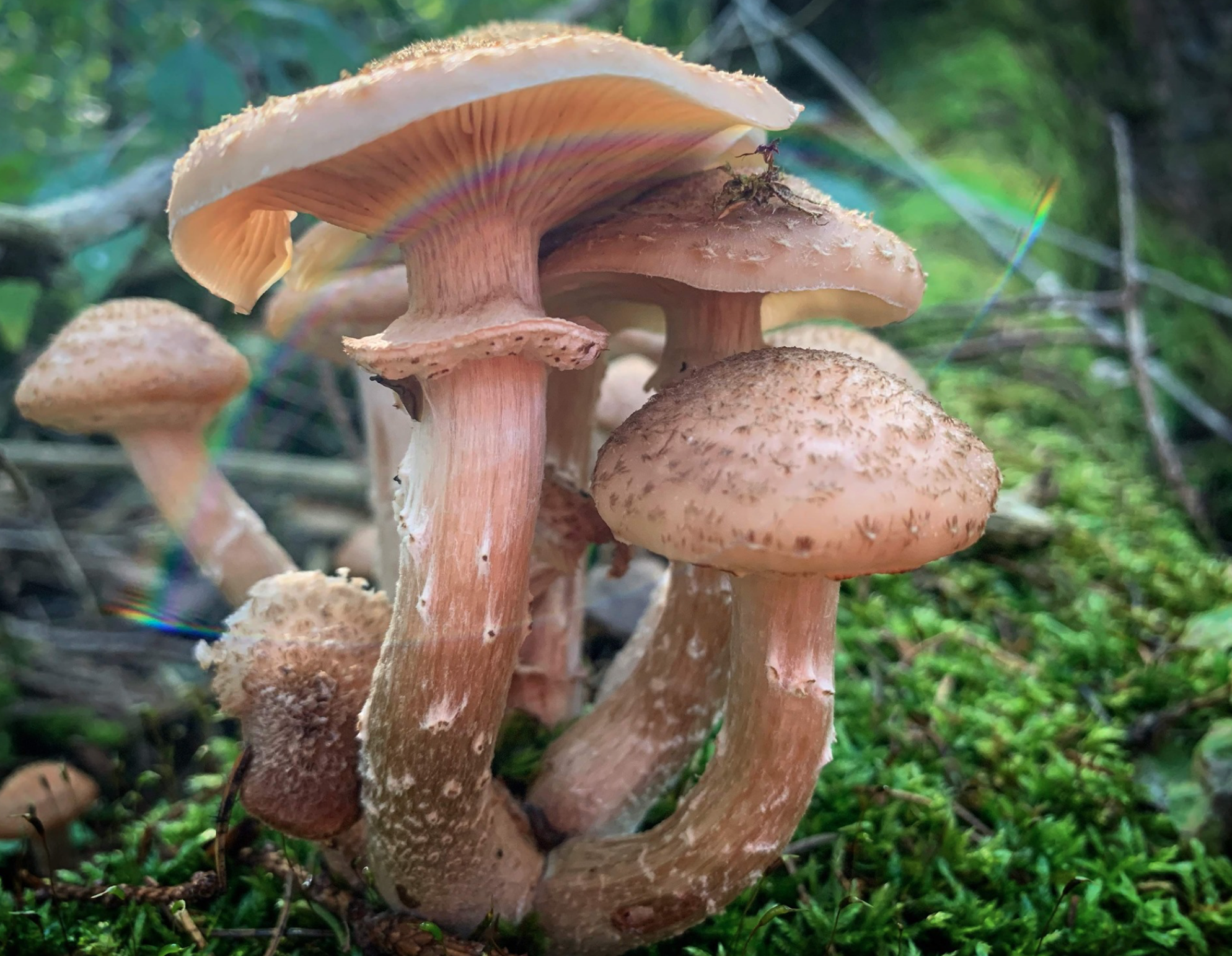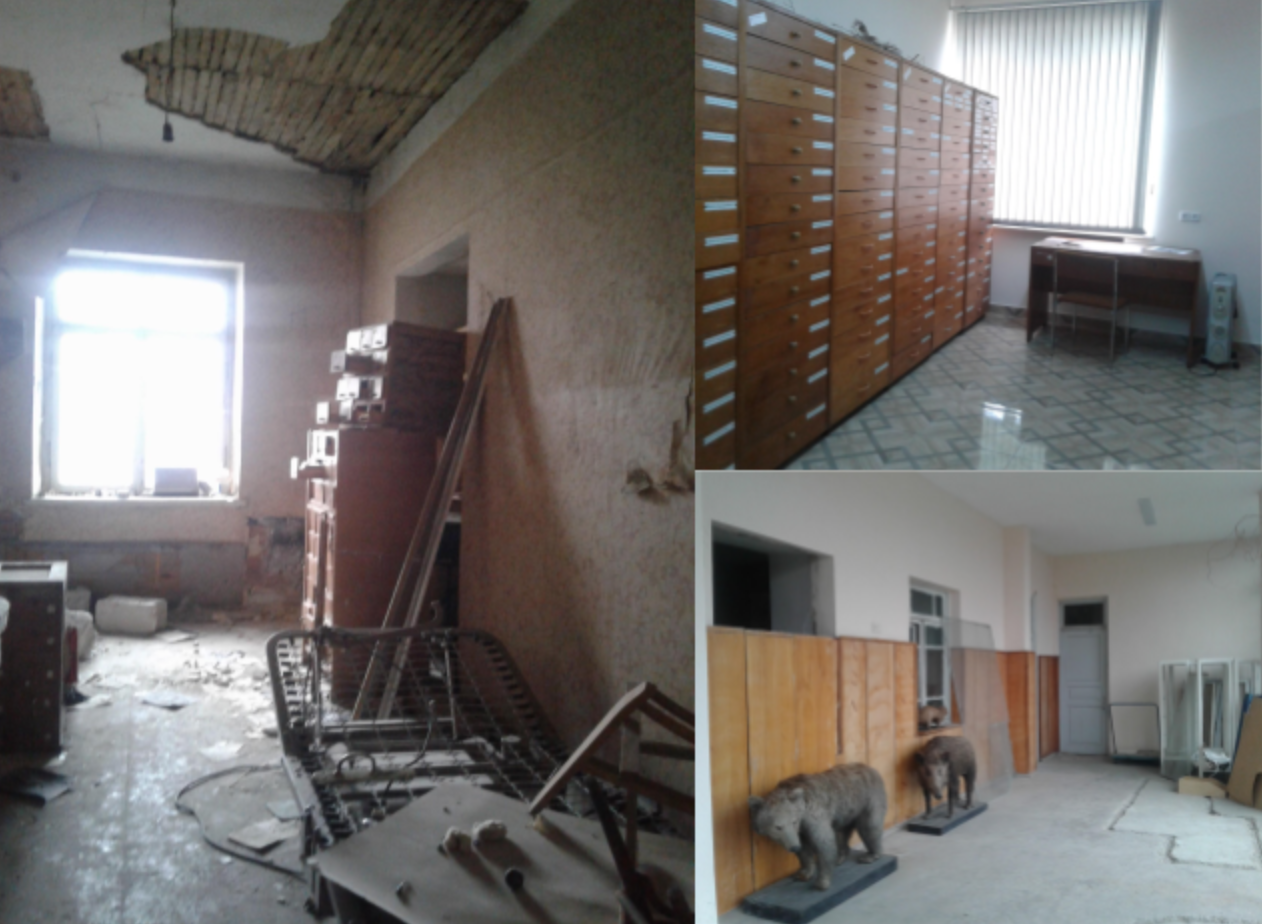
When Patricia Kaishian was growing up in Putnam County north of New York City, she and her five siblings spent long hours playing in the woods behind their house. There was a stream that ran into wetlands where Patty, as she is known, fell in love with snapping turtles and snakes, and “all things slimy and unusual. I was always really drawn to organisms that other people were not so comfortable around,” she said.
On her father’s side, Kaishian’s family was Armenian, and on her mother’s Irish. Her father’s family had gone through Ellis Island, where their name was changed from Keshishian to Kaishian, after which they headed north to Syracuse where they were carpet dealers for 20 years before relocating to Yonkers. Her relationship to things Armenian involved food, carpets and visits with her father’s relatives; but her father did not speak Armenian, and the family lived in a primarily Irish-Italian suburb. Kaishian was closer to her mother’s large Irish family and attended the Catholic Church. But she always had a longing to know more about her father’s family history and to be more involved in the Armenian community.
During her undergraduate studies at Wheaton College in Massachusetts, Kaishian took a semester off to attend a naturalist course given by the Cornell Cooperative Extension. The mushroom section was taught by Dr. George Hudler, author of Magical Mushrooms, Mischievous Molds. Dr. Hudler was the first mycologist Kaishian had ever met. While studying with Hudler, she fell in love with mushrooms and was determined to make their study her life’s work. “There was an intrinsic connection between my identity and mycology that first drew me to this study,” she said. “In fungal biology, I saw reflected the same ambiguities, disruptive paradigms and mischaracterizations that marked both my race and orientation. This brought me a sense of comfort and purpose, both as a scientist and as an advocate for the diversity of life in all its forms.”

There were no mycology courses at Wheaton, but Kaishian studied botany and later traveled to Costa Rica for a tropical biology class at the La Selva Research Station in the rainforest. Kaishian pursued mycology and forest pathology in graduate school at the State University of New York’s College of Environmental Science and Forestry (SUNY-ESF) writing a dissertation entitled Mycologis Obscura: Hidden and Layered Realms of Fungal Diversity focused on rust fungi. As a post-doctoral researcher at Purdue University, Kaishian helped generate DNA sequencing for over one-thousand fungi. She was also the fungal curator at Purdue’s Arthur Fungarium & Kriebel Herbarium. She is now back in the Hudson Valley of her childhood as visiting assistant professor of biology at Bard College in Annandale-on-Hudson.

In addition to her work identifying and classifying fungi and promoting conservation and biodiversity, Kaishian’s academic work also includes interdisciplinary studies focused on the philosophy of science, feminist bioscience and science communication. In November 2020, she co-authored a paper with Hasmik Djoulakian that they entitled “The Science Underground: Mycology as a Queer Discipline.” It was published in Catalyst: Feminism, Theory, Technoscience. Soon after, Kaishian started appearing on a number of podcasts, raising the public profile of her work. Mushrooms, so long a marginal subject, had recently become popular, and Kaishian’s expertise and analysis are much in demand, as is her gift of connecting the world of fungi to a wide variety of human concerns.
In high school, she learned about the Armenian Genocide in history class, and she soon joined a Facebook group for descendants of Genocide survivors. But the connection remained abstract until quite recently. Kaishian’s parents and grandparents had a long commitment to civil rights activism, and from a young age she herself was concerned about human rights issues around the world. At 13, she joined Amnesty International and attended a protest in support of political prisoners in Myanmar.
In October 2020, the war in Artsakh became a catalyst for bringing together these global concerns and her Armenian heritage. Kaishian became more intentional about her involvement with Armenia. She said that she was surprised by how deeply she experienced the trauma of the war. “It was a genetic, cellular pain that caught me off guard,” she said. “I felt a deep nausea, got depressed and felt powerless.”
Kaishian said that the war was also an experience of “othering” for her, one that reconfigured her identity. She felt like an outsider in leftist organizing spaces where few people knew much about Armenia or Artsakh. She lost a sense of safety and belonging among her American peers, and she also suffered from imposter syndrome because although she felt profoundly connected to what was happening in Armenia, she spoke no Armenian. She also recognized that her pain and inner turmoil were a pale shadow of what people in Armenia were feeling as the country reeled from the devastating loss of so many of its young men, the theft of land and monuments in Artsakh, as well as the existential threat posed by Azerbaijani and Turkish aggression.

In response to the war, in November 2020 Kaishian joined forces with three other young American mycologists of Armenian descent—Tania Kurbessoian, Claudia Bashian-Victoroff and Arik Joukhajian—to found the International Congress of Armenian Mycologists (ICAM), which seeks to study the biodiversity of Armenia and materially support the work of mycologists in the country. “Armenians are so often defined by struggle and conflict, but we wanted to find a way to make a meaningful impact on Armenian culture and society through this project that was positive and forward looking,” explained Kaishian, “We wanted to leverage our skills as scientists to advocate for Armenia.”
ICAM’s chief collaborator in Yerevan is Arsen Gasparyan, the head of Lichen Research at the A. Takhatajyan Institute of Botany of the National Academy of Science of the Republic of Armenia. Gasparyan is also a conservation officer for the World Wildlife Fund (WWF) where he focuses on protecting biodiversity and educating children about the natural world. Kaishian explained that since the war, Armenia’s already meager resources for scientific research have become even more scarce. Doctoral students in Armenia have an average salary of $100 per month, and most of them must take on multiple jobs in order to cover their living expenses. ICAM is currently raising money for a molecular biology research lab in Yerevan, hoping to provide the tools that are fundamental to keeping Armenia’s scientists in league with their international colleagues.

ICAM is also preparing a National Science Foundation Infrastructure grant proposal for the rebuilding of the herbarium at the A. Takhtajyan Institute of Botany. The Institute, which was established in 1938, has an herbarium with the richest collection of plants in Armenia, containing more than 500,000 specimens collected from Armenia and the Caucasus region. Unfortunately, the building is in dire need of repair. The plan is to improve the building, and to equip it with museum grade collection cabinets, lab benches, microscopes, computers, digitization equipment and other furnishings to afford Armenia’s scientists the opportunity to conduct cutting edge scientific research.
One of the driving philosophies behind ICAM’s efforts is the idea that biodiversity thrives when people who are indigenous to the land are the stewards of the land. Kaishian gives the example of Azerbaijan’s use of white phosphorus, a chemical that burns at extremely high heat, during the 2020 war that resulted in extensive fire damage in the forests, as well as causing terrible physical injuries to Armenian soldiers and civilians. This is the opposite of indigenous stewardship.
Kaishian says that ICAM would like to undertake a study of the effects of white phosphorus on fungi. She is currently enrolled in Armenian language classes and hopes to bring a group of Bard undergraduates to Armenia in 2023. She says, “We are imagining and building a thriving future for Armenia that involves an intimate relationship with non-human life forms while supporting Armenian scientists.”
Click here if you’d like to learn more about how you can support the work of ICAM.



Ապրիս Ms Krikorian for a very informative article.
Thanks for reading! I find Patty and ICAM’s work to be inspiring and hopeful.
Շատ հաճույքով կարդացիմ այս հետաքրքիր հօտվածը։ It was truly a very pleasant article to read. Nancy Kricorian has excellently covered the work of a young scientist having Armenian background, her feelings during the Artsakh war and her recent attempt to revive the Takhtajyan herbarium in Yerevan. I remember meeting Takhtajyan at the International Botanical Conference 1987 Berlin. Prof. Jirair Carapetian, Geneticist, Urmia University, Iran.
Just listened to a great Science Friday podcast with Dr Patricia Kaishian. Well worth the listen!
Wonderful wonderful! As I age I become even more fascinated with these beings. This biodiversity in Finland needs also to come more out in the open as we are losing so much, and rapidly. These discussions need to come here! Thank you!